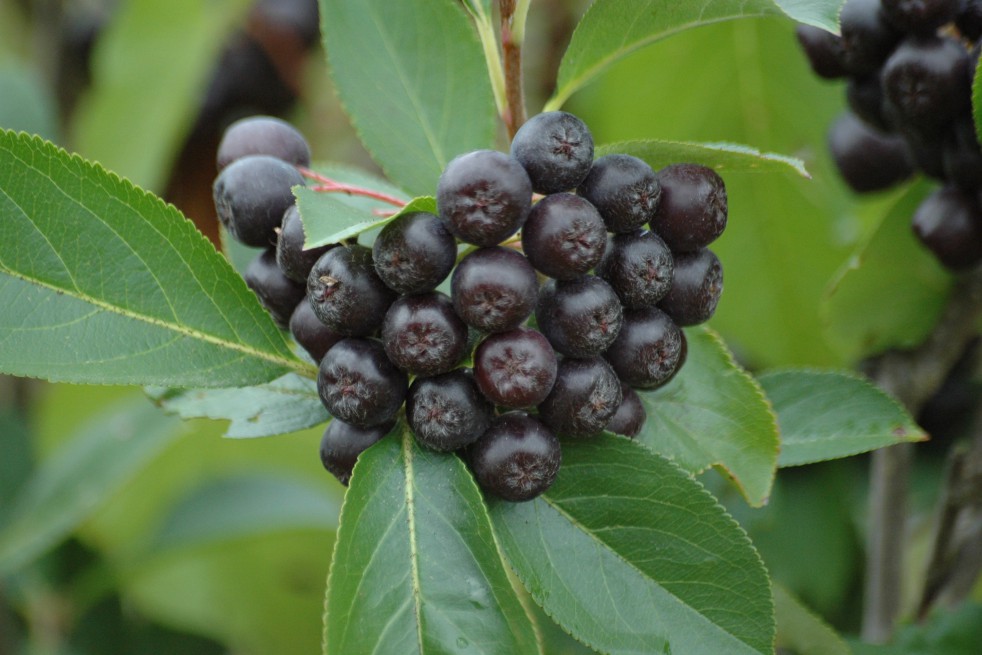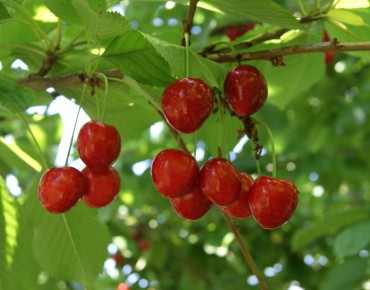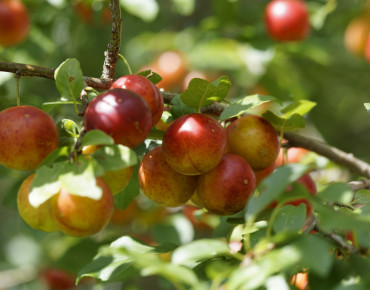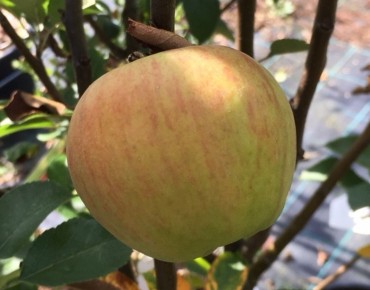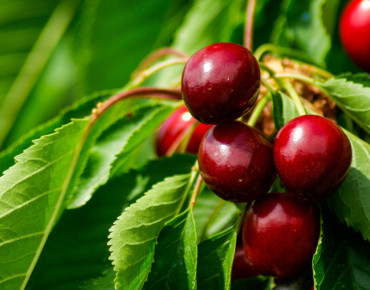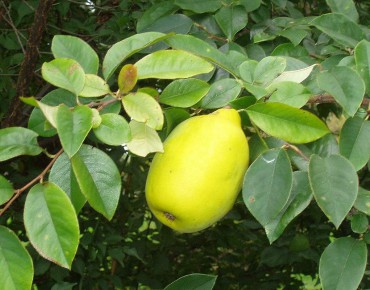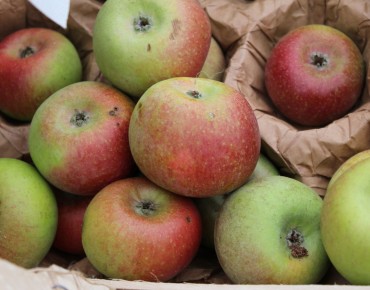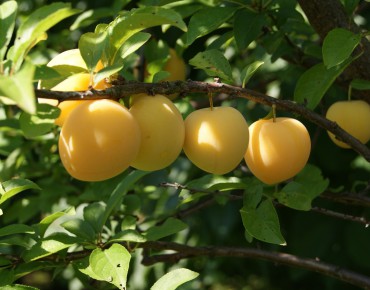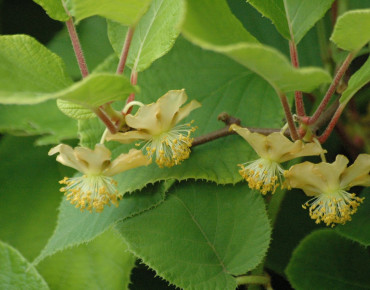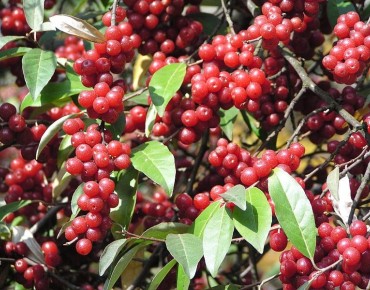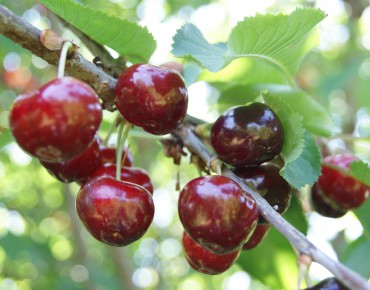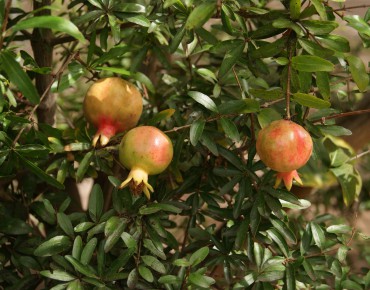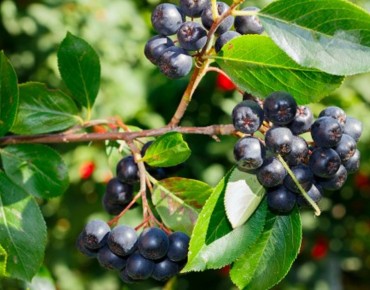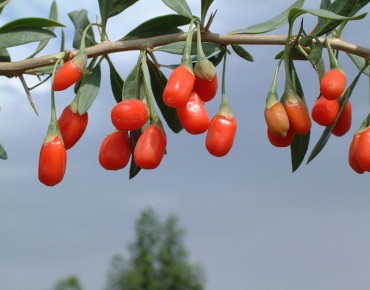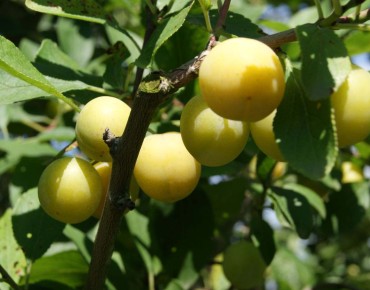Black chokeberry
Aronia Melanocarpa
Description
Black Chokeberry - Aronia melanocarpa
Aronia melanocarpa is a hardy shrub prized for its antioxidant-rich black berries, ideal for cooking and health. Easy to grow, it offers decorative foliage and discreet flowering, while being resistant to disease and varied climatic conditions. A perfect choice for a garden that is both aesthetically pleasing and useful.
Origins and characteristics
Native to North America, mainly Canada and the eastern United States, Aronia melanocarpa belongs to the Rosaceae family.
This shrub is valued for its ornamental, honey-producing, and fruit-bearing qualities.
Description and particularities
- Adult height: 1.50 to 2 meters.
- Adult width: 1.50 meters.
- Habit: Compact, upright, slightly spreading with age.
- Leaf type: Deciduous; glossy dark green in summer, bright scarlet red in autumn.
- Flowering period: May
- Flowers: Small white flowers in corymbs, honey-rich, lightly scented.
- Fruits: Red then black berries, rich in antioxidants, edible in jams, syrups, and juices.
- Hardiness: Excellent, down to -30 °C.
Exposure and soil
Exposure: Sun or light partial shade.
Soil: Fresh to moderately dry, well-drained soil; tolerates poor and slightly acidic soils.
Tolerance: Resistant to wind, drought, and pollution.
Planting
Period: Autumn or spring.
Preparation: Loosen the soil, enrich with light compost if necessary.
Spacing: 1.20 to 1.50 meters; for a spectacular mass effect, plant in groups of 3 to 6 specimens.
Watering
At planting: Regular watering to facilitate rooting.
Mature plants: Low maintenance; water during prolonged drought.
Pruning
Timing: Late winter or early spring (February-March).
Advice: Light pruning to balance the shape; remove dead wood and old shoots to stimulate growth.
Propagation
Sowing (slow to germinate) or semi-hardwood cuttings in summer.
Garden use
Locations:
Shrub borders, informal fruit hedges, group plantings, solitary on lawns, large container cultivation.
Recommended plant associations:
Vaccinium corymbosum (Blueberry) to enhance the fruity and acid-loving atmosphere.
Cornus alba 'Sibirica' for a winter contrast with its red stems.
Physocarpus opulifolius: to complement the dark and reddish foliage.
Disease protection
Sensitivities: Very robust; little susceptible to diseases and pests.
Prevention: No particular treatment; prefer airy planting.
Tips for good growth
Plant in full sun to maximize flowering and fruiting, mulch the soil to retain moisture in summer, prune lightly every late winter to maintain a compact shape, plant in groups to accentuate autumn visual impact, favour planting in slightly acidic soil for optimal development.
Features
- Common name : Black chokeberry
- Family : Rosaceae
- Category : fruit tree
- Spread : 1,50 m
- Foliage : deciduous
- Color of flowers : White spotted rose
- Fruit : Small edible black fruits from 4 to 7mm
- Harvest : Late summer early autumn
- Use : hedges, shruberry, isolated
- Soil : Well-drained - rather acidic
- Habit : upright
- Earth to use : 50% universal potting soil and 50% heath earth
- Enemies : nothing to report
- Possible diseases : resistant to diseases
Expédition & livraison
How does the delivery work?
 As soon as you place your order your plants are selected
As soon as you place your order your plants are selected Each order is processed individually.
Each order is processed individually. Plants are packed, staked and labeled.
Plants are packed, staked and labeled. Packaging is carefully implemented to avoid any problems.
Packaging is carefully implemented to avoid any problems. Packages are ready to be shipped.
Packages are ready to be shipped.
Our delivery methods
Shipping of our plants throughout Europe (except overseas and islands).
Customer reviews

